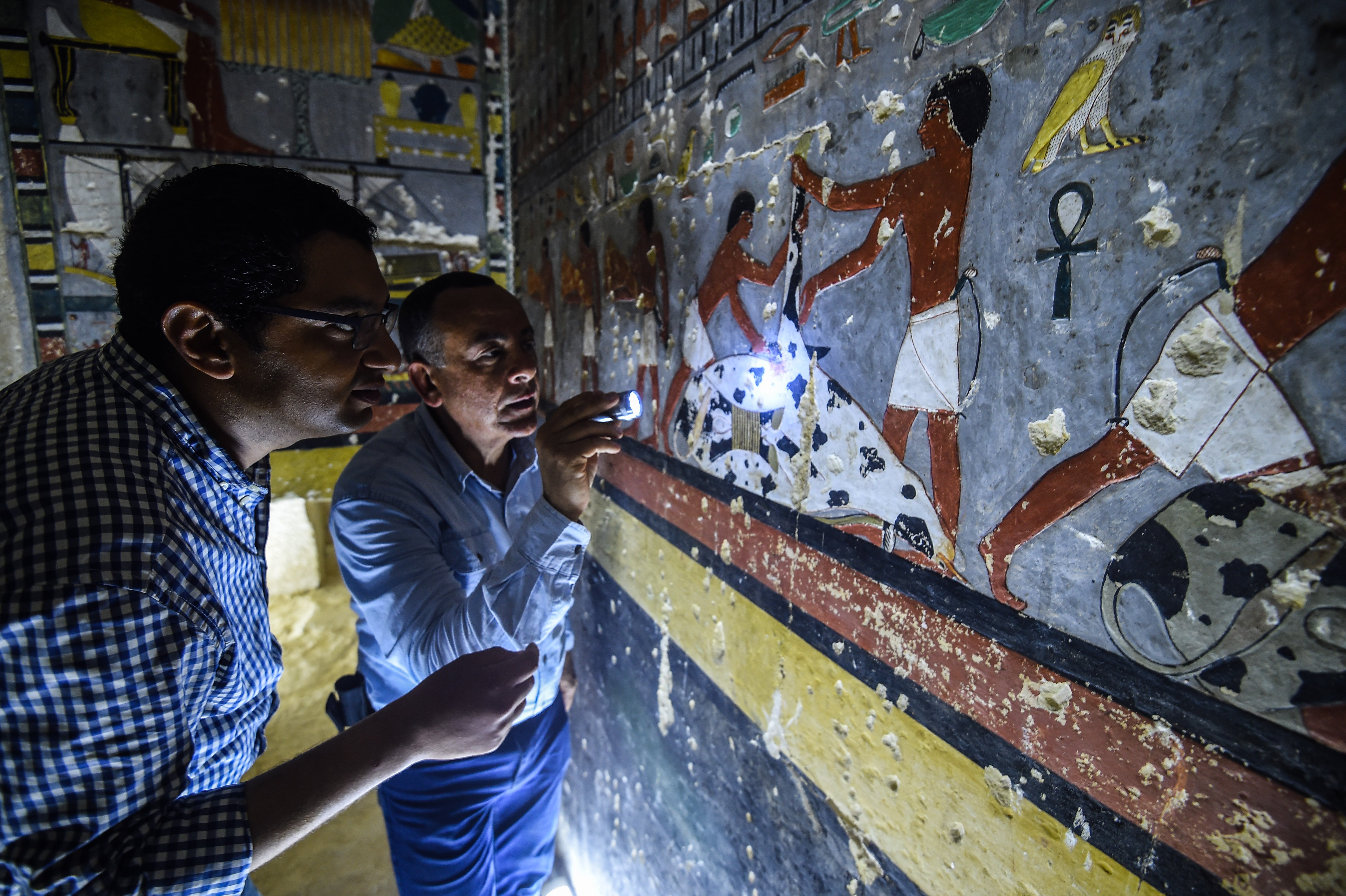
New evidence reveals that ancient Egyptians were using advanced mummification techniques a full 1,000 years earlier than previously believed, which could dramatically alter our knowledge of this civilization. According to the Guardian, this is just one of the tantalizing discoveries that will be unveiled beginning on November 7 as part of National Geographic‘s docuseries Lost Treasures of Egypt, produced by Windfall Films.
In the fourth episode, “Rise of the Mummies,” scheduled to air on November 28, a team of archaeologists discover that the body of Khuwy, a dignitary whose tomb was found in 2019, dates to the Old Kingdom, the period spanning roughly 2700–2200 B.C.E., and is one of the oldest mummies ever found.
“This would completely turn our understanding of the evolution of mummification on its head,” Professor Salima Ikram, of the American University in Cairo, told the Guardian. “All books about mummification and the history of the Old Kingdom will need to be revised.”
Inside the newly discovered tomb of the ancient Egyptian nobleman Khuwy at the Saqqara necropolis. Photo: Mohamed el-Shahed/AFP.
When archaeologists first came upon the massive, stunningly well-preserved necropolis at Saqqara, south of Cairo, in 2019, they understood it to be 4,000 years old, dating it to the Fifth Dynasty, which spanned from the 25th to the 24th centuries B.C.E. The discovery and a tour of the vivid paintings inside Khuwy’s tomb was featured in an earlier season of the National Geographic series, which also showed that the necropolis was lined with pottery, including canopic jars, or urns used to hold entrails from an embalmed body,
Analyses of the Saggara find are now emerging. According to Ikram, the preservation method and the materials—which researchers have determined to be fine linen dressed with high-quality resin—had previously only been identified in use 1,000 years after Khuwy’s burial. Instead, scholars believed that a more rudimentary mummification process—consisting of a basic moisture-leaching procedure, rarely removing internal organs and never the brain—was the standard. “This mummy is awash with resins and textiles,” Ikram told the Guardian, adding, “The materials used, their origins, and the trade routes associated with them will dramatically impact our understanding of Old Kingdom Egypt.”